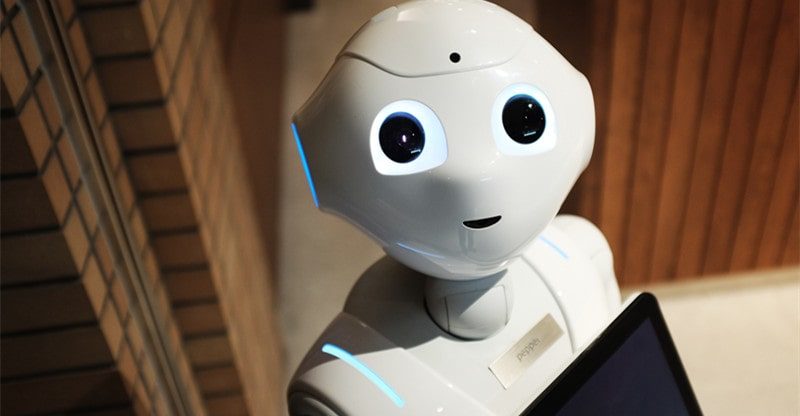Artificial Intelligence in the Modern Age
Artificial intelligence has come a long way in the past few decades. In the early days of AI development, the focus was on programming machines to complete very specific tasks, such as playing chess or solving mathematical problems.
However, with the advent of big data and machine learning, AI has become far more powerful and versatile. It can now be used to analyze and make decisions based on large amounts of data. This has led to the widespread adoption of AI across many industries.
In this blog, we will discuss all aspects of AI in the modern age. We will start by discussing what artificial intelligence is and how it works. Then we will look at some real-world applications of AI. Finally, we will explore some of the challenges and ethical concerns associated with AI development.
What is Artificial Intelligence, and How Does it Work?
Artificial intelligence (AI) is a branch of computer science that deals with creating intelligent machines. It has been defined in many ways, but in general, AI research deals with the problem of how to create computers that are capable of intelligent behavior.
There are three main approaches to AI: symbolic reasoning, rule-based systems, and learning algorithms. Symbolic reasoning is a method of problem-solving that uses logic to derive new conclusions from existing knowledge. Rule-based systems use a set of rules or heuristics to make decisions. Learning algorithms are able to learn from data and improve their performance over time.
Most modern AI applications use some combination of all three approaches. For example, a machine learning algorithm may be used to identify patterns in data, which can then be used by a rule-based system to make decisions. AI has been used in a variety of fields, including medical diagnosis, stock trading, robot control, and video game playing. In each case, AI is used to automate tasks that would otherwise be difficult or impossible for humans to perform.
Two Main Types of AI
There are two main types of AI: narrow AI and general AI. Narrow AI refers to an AI system that is designed to perform a specific task. General AI, on the other hand, is an AI system that is capable of intelligent behavior across a range of tasks. Currently, all practical applications of AI are narrow AI. However, many researchers believe that it will eventually be possible to create general AI.
Categories of AI Systems
AI systems can be classified into four different categories:
- Reactive machines: These are the simplest form of AI, and they can only react to the environment. They cannot form memories or make decisions based on past experiences.
- Limited memory: These AI systems have some ability to remember past events and experiences. This allows them to learn from data and improve their performance over time.
- Theory of mind: This is a type of AI that is able to understand mental states such as beliefs, desires, and intentions. Theory of mind is still in its early stages of development, but it has the potential to be used in a wide range of applications, including medical diagnosis, robotics, and human-computer interaction.
- General intelligence: This is the highest level of AI, and it refers to an AI system that is able to understand the world as well as a human does and can perform any intellectual task that a human can. General intelligence is still theoretical, and there are no known practical applications.
Learning Styles
AI systems can also be classified based on their learning style:
- Supervised learning: This is where the AI system is given a set of training data that includes the correct answers. The system then learns from this data and is able to generalize to new data. This approach is commonly used in image recognition and spam detection.
- Unsupervised learning: This is where the AI system is given a set of data but not told what the correct answers are. The system then has to learn from this data and find any patterns or structures. This approach is commonly used in applications such as market segmentation and anomaly detection.
- Reinforcement learning: This is where the AI system interacts with its environment and learns by trial and error. The goal is to maximize some long-term rewards. This approach has been used in a variety of tasks, including game playing, robotics, and navigation.
Most Common AI Algorithms
There are many different types of AI algorithms, but some of the most common are:
- Decision trees: These are a type of algorithm that can be used for both classification and regression tasks. A decision tree starts at the root node and splits the data into different branches based on certain conditions. The leaves of the tree contain the final decision or prediction.
- Artificial neural networks: These are algorithms that are inspired by the structure of the brain. They typically consist of a large number of interconnected processing nodes or neurons, which can learn to recognize patterns of input data. Neural networks are commonly used in applications such as image recognition and speech recognition.
- Support vector machines: These are other types of algorithms that can be used for both classification and regression tasks. A support vector machine finds a line or hyperplane that separates the data into different classes. This line is then used to make predictions about new data points. Support vector machines are commonly used in applications such as facial recognition and text classification.
AI Applications
There are many different types of AI applications which include:
- Speech recognition: This is where an AI system is able to convert spoken words into text. This can be used for tasks such as dictation and voice search.
- Natural language processing: This is where an AI system is able to understand human language and respond in a way that is natural for humans. NLP can be used for tasks such as machine translation and chatbots.
- Image recognition: This is where an AI system is able to identify objects, people, or scenes in images. This can be used for tasks such as facial recognition and object detection.
- Robotics: This is where robots are controlled by AI systems. Robotics can be used in a wide range of applications, including manufacturing, healthcare, and transportation.
- Self-driving cars: This is where AI systems are used to control vehicles with the goal of achieving fully autonomous driving. This technology is still in its early stages but has the potential to revolutionize transportation.
Examples of AI in the Modern Age
There are many examples of AI in the modern age, which include:
- Smartphones: The majority of smartphones now come with some form of AI, such as Siri, Google Assistant, or Alexa. These virtual assistants are able to perform tasks such as making phone calls, sending messages, and opening apps.
- Autonomous cars: There are a number of companies that are currently developing autonomous car technology. This includes Tesla, Google, and Uber. Autonomous cars will be able to navigate without the need for a human driver.
- Home appliances: A wide range of home appliances now come with AI features such as voice control and automatic operation. This includes products such as thermostats, vacuums, and security systems.
- Business systems: AI is being used by a growing number of businesses to automate tasks and improve efficiency. This includes applications such as chatbots, predictive analytics, and fraud detection. For example, machine learning in insurance is being used to detect fraud and pricing risks.
The future of AI is often described as a technological singularity or a point at which machines surpass human intelligence, and we are unable to predict their future behavior. Some experts believe that this could happen within the next few decades, while others think it is centuries away. There are many different opinions on what will happen when we reach this point, but one thing is for sure, AI will continue to evolve and have a profound impact on our world.



